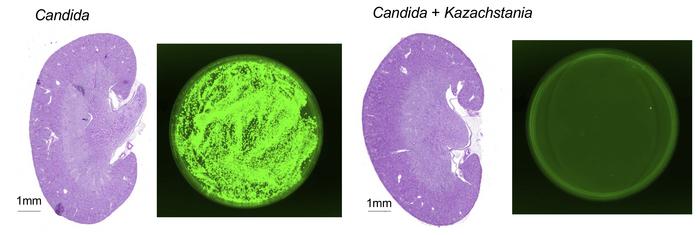Researchers at the Weizmann Institute of Science in Israel have discovered a new species of yeast that could potentially prevent a life-threatening fungal infection in hospitalized and immunocompromised patients.
The study, set to be published on March 18 in the Journal of Experimental Medicine (JEM), reveals that this novel yeast can harmlessly reside in the intestines of mice and humans while displacing Candida albicans, the yeast responsible for the dangerous infection known as invasive candidiasis.
Candida albicans is a common microscopic yeast found in the intestines and other mucosal surfaces of the body. While usually harmless, it can sometimes overgrow and cause superficial infections like thrush. In more severe cases, particularly in immunocompromised patients, the yeast can penetrate the intestinal barrier and infect the blood or internal organs, leading to invasive candidiasis. This condition is commonly seen in healthcare settings and has a mortality rate of up to 25%.
During their study of yeast infections in laboratory mice, Steffen Jung and his team at the Weizmann Institute came across a new species of yeast that prevented the animals from being infected with Candida albicans. They named this species Kazachstania weizmannii and found that it is closely related to yeast used in sourdough production. K. weizmannii appears to live harmlessly in the intestines of mice, even when their immune systems are suppressed.
The researchers discovered that K. weizmannii can outcompete Candida albicans for its place within the gut, reducing the population of the potentially harmful yeast. When immunosuppressed mice were given K. weizmannii in their drinking water, it significantly delayed the onset of invasive candidiasis.
“By virtue of its ability to successfully compete with C. albicans in the murine gut, K. weizmannii lowered the C. albicans burden and mitigated candidiasis development in immunosuppressed animals,” Jung says. “This competition between Kazachstania and Candida species could have potential therapeutic value for the management of C. albicans–mediated diseases.”
Interestingly, the researchers also found K. weizmannii and similar species in human gut samples. Their preliminary data suggest that the presence of K. weizmannii and Candida species in human intestines might be mutually exclusive, indicating that the two species could also compete with each other in the human body.
Illustration: A microscopic image showing the novel yeast species Kazachstania weizmannii (green) outcompeting the potentially harmful Candida albicans (red) in the intestines.

